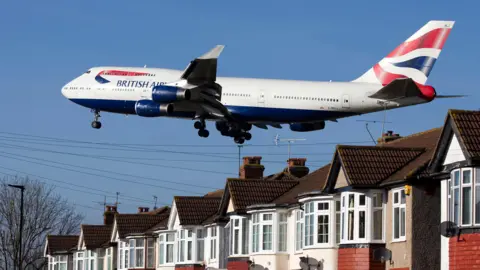The UK government has recently revealed plans that could drastically alter the dynamics of air travel in the region. As part of an initiative designed to expedite the modernization of the country’s flight paths, officials anticipate that these changes will lead to shorter flight times and fewer delays for passengers overall. This major development, centered around the establishment of the UK Airspace Design Service (UKADS), will focus on redesigning the air routes that many aircraft currently follow over the UK, many of which have been in place for approximately 70 years.
An emphasis on the initial reshaping will take place in and around London, acknowledging the importance of this bustling travel hub, home to major airports such as Heathrow and Gatwick. According to the aviation ministry, the modernization of airspace is aimed at enabling aircraft to climb more quickly upon takeoff and descend more smoothly before landing, effectively improving the efficiency and timeliness of flights throughout the UK’s airspace.
However, not everyone is in favor of this shake-up. Cagne, a community aviation and environmental organization that focuses on issues affecting Kent, Surrey, and Sussex, has raised concerns about the potential impact of these new flight paths. They warn that certain households—which currently experience no noise or disruption from air traffic—might suddenly find themselves under new flight paths. Such changes could lead to increased disturbances for residents, igniting discussions around the balance between efficiency in air travel and the quality of life for citizens.
While the technical improvements and strategic initiatives are focused on enhancing air traffic management, there is also a strong emphasis on environmental considerations. One of the goals of UKADS is to help mitigate the aviation sector’s contribution to climate change. By modernizing airspace, officials believe they can make significant strides toward reducing the carbon footprint associated with air travel, which in turn would set the industry on a path toward a sustainable future. Aviation minister Mike Kane underscored this viewpoint by stating that modernizing airspace is one of the most straightforward means to curtail pollution from aviation activities.
In addition to the immediate benefits presented by quicker climbs and smoother descents, these adjustments would facilitate the adoption and integration of innovative technologies, including the possibility of flying taxis. This ambition not only targets current air travel demands but also seeks to prepare the aviation industry for the future, considering the evolving needs of urban mobility and transportation.
The overhaul of the UK’s airspace represents the most significant redesign effort since the initial airspace system was established in the 1950s. By reevaluating and restructuring these pathways, the government is trying to ensure that air travel is not only efficient but also aligns with contemporary standards and technological advancements.
As the government prepares to unveil these plans officially, stakeholders across the aviation sector and the public will be closely monitoring the discussions and implications of the new flight paths. This reflects not only the practical aspects of airline operations but also the pressing need for community engagement as the country steps into a new era of air travel management. The decisions made now could have lasting effects on both industry efficiency and community well-being.
In conclusion, while the proposed changes point towards a leap forward in aviation efficiency and sustainability, they also highlight the inherent tension between technological advancement and local community impacts. As the UK embarks on this ambitious journey to modernize its air traffic system, the balance between these competing interests will be crucial in shaping the future of travel in the region.











